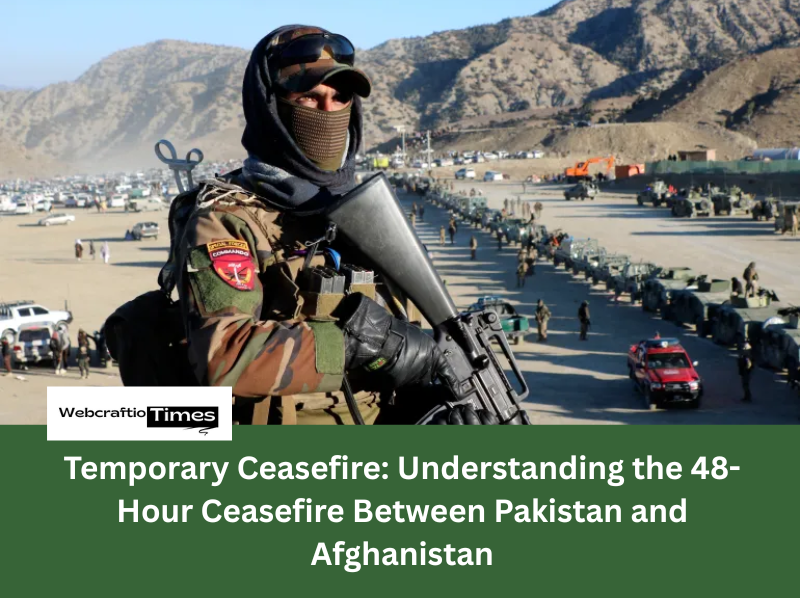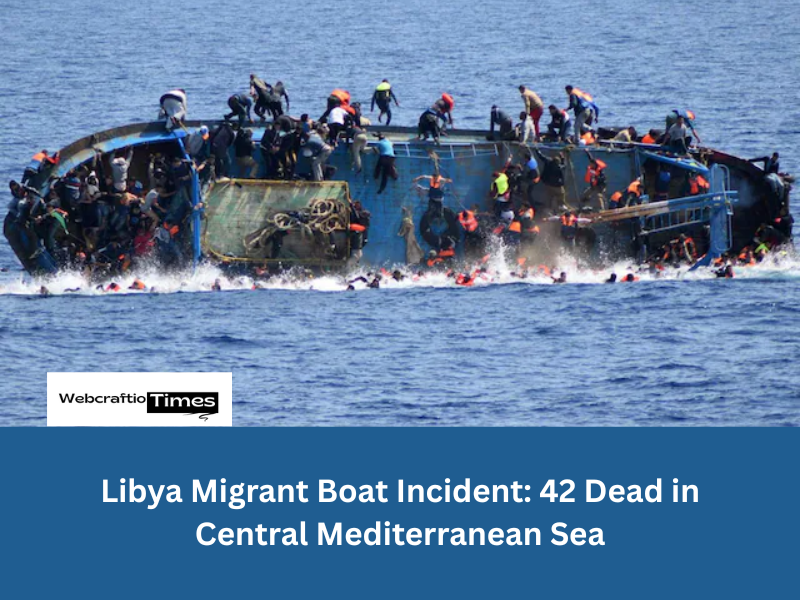The volatile frontier shared by Pakistan and Afghanistan, a border officially known as the Durand Line, has once again erupted into violence. Only to be momentarily silenced by a precarious 48-hour temporary ceasefire.
This latest diplomatic maneuver, agreed upon between the Government of Pakistan. And the Afghan Taliban regime, is more a desperate pause than a lasting resolution. It follows days of the deadliest cross-border clashes in years. This highlights the dramatic and dangerous deterioration of relations between former allies.
The core of the crisis lies in Pakistan’s accusations that the Afghan Taliban is harboring and refusing to crack down on the Tehreek-e-Taliban Pakistan (TTP). An ideologically aligned militant group responsible for a surge in deadly attacks on Pakistani soil. The cycle of accusation, cross-border shelling, and retaliatory strikes brought the two neighbors to the brink of a wider conflict. Underscoring the severe instability gripping the region.
The Peace Process: Understanding the Immediate Crisis
The events that precipitated the recent ceasefire were a culmination of mounting tension. Days before the truce, reports emerged of Pakistani precision strikes targeting suspected militant hideouts in Afghanistan’s Kandahar province and the capital, Kabul. Islamabad framed these actions as an exercise of its right to self-defense. Following attacks that had claimed the lives of numerous Pakistani security personnel.
The Afghan Taliban, in turn, denied harboring anti-Pakistan militants and instead accused Islamabad of unprecedented violations of its sovereignty and airspace. The retaliation from the Afghan side involved coordinated attacks on Pakistani border posts. Resulting in dozens of casualties on both sides and the temporary closure of key trade crossings like Torkham and Chaman.
Against this backdrop of open hostility, the 48-hour ceasefire was announced on October 15, 2025. Pakistan’s Foreign Office stated the truce was agreed upon at the Afghan Taliban’s request. Intended to create space for “constructive dialogue” to address the “complex but solvable issue.
The Afghan Taliban, however, contradicted this, asserting the pause was made at the “insistence” of the Pakistani side. And would hold only as long as Pakistan did not commit further aggression. This immediate disagreement over who sought the truce highlights the profound lack of trust that plagues the relationship.
The TTP Factor: The Foundation of the Permanent Conflict
The central antagonist driving the recent crisis is the Tehreek-e-Taliban Pakistan (TTP). A terrorist organization distinct from but ideologically allied with the Afghan Taliban.
The Removal of the “Strategic Asset”
For decades, Pakistan viewed the Afghan Taliban as a strategic asset, a proxy that could secure its interests in a neighboring state. However, the Taliban’s return to power in Kabul in August 2021 proved to be a strategic nightmare for Islamabad. The group, no longer needing Pakistani sanctuary. Prioritized its own nationalist agenda and ideological affinity with the TTP over Pakistan’s security demands.
Since the withdrawal of US forces, the TTP. Emboldened and operating with a renewed sense of impunity, has significantly ramped up its attacks inside Pakistan. Primarily targeting the provinces of Khyber Pakhtunkhwa and Balochistan. The TTP’s stated goal is to overthrow the Pakistani government and impose its rigid interpretation of Islamic governance.
Kabul’s Rejection vs. Islamabad’s Request
Pakistan’s key demand is for the Afghan Taliban to either eliminate TTP militants operating from Afghan soil or hand them over. The Afghan government has consistently refused this. Adopting a stance that the TTP is a “fight inside Pakistan”. A narrative that resonates with the Pashtun population who have never recognized the colonial-era Durand Line as a legitimate international boundary.
A July 2025 UN report further exacerbated tensions by detailing TTP’s continued access to logistical and operational support from elements within the Afghan Taliban. Islamabad’s direct cross-border strikes . An unprecedented escalation, were a clear signal that its patience with Kabul’s diplomatic denials and inaction had run out.
International Intervention and Mediation Efforts
The rapid escalation along the Durand Line triggered immediate concern from major regional powers, who feared the conflict could further destabilize. A region already grappling with the resurgence of groups like ISIS-K and Al-Qaeda.
The Role of Gulf States
Crucially, the initial pause in hostilities that led to the 48-hour ceasefire was largely attributed to the diplomatic efforts of Qatar and Saudi Arabia. Both Gulf states. Which maintain channels of communication with both Islamabad and Kabul, urged both sides to exercise restraint and pursue a peaceful resolution through dialogue. Qatar, in particular, was cited by diplomatic insiders as having played a key role in facilitating the initial understanding.
Calls for Restraint
The international community, including the United Nations, echoed these calls for dialogue, emphasizing the need for both nations to prevent further loss of civilian life. However, despite the external pressure, the deep-seated mistrust and conflicting national interests meant that the ceasefire remained fundamentally fragile, lacking a robust mechanism for long-term monitoring or resolution.
The unstable Future: Why the Truce Might Not Hold
The primary danger is that the 48-hour truce will prove to be merely a temporary cooling-off period before the fighting resumes. Several factors contribute to the fragility of the situation:
The Lack of Trust
The most significant hurdle is the profound lack of trust between the two governments. As demonstrated by the conflicting claims over who requested the ceasefire, neither side is willing to concede diplomatic ground. Pakistan’s Defense Minister, Khawaja Asif, publicly expressed “doubts that the ceasefire will hold,” even accusing the Afghan Taliban of fighting a “proxy war” for a rival power.
Non-Recognition of the Border
The Afghan government’s refusal to formally recognize the Durand Line is a perpetual flashpoint. Pakistan’s efforts to complete fencing along the 2,600-km border have been met with resistance and destruction of parts of the fence by Afghan guards, asserting a continued challenge to Pakistan’s territorial control.
TTP’s Unwavering Threat
Until the TTP’s safe havens are addressed, whether by Kabul or by Pakistani military action, the fundamental cause of the cross-border hostility remains. For Pakistan, the rising tide of militancy is a domestic security crisis that cannot be ignored. For the Afghan Taliban, acting against the TTP risks alienating a key ideological and operational ally. Potentially undermining their own domestic base.
In conclusion, the 48-Hour Ceasefire Between Pakistan and the Afghan Taliban is a welcome. Yet momentary, reprieve from a deadly escalation. It represents a brief tactical victory for diplomacy, largely due to external pressure. However, without a concrete framework to address the underlying issue of cross-border terrorism, the future of the Durand Line remains highly volatile.
The only path to a lasting peace requires a political and security reckoning by the Afghan Taliban on the issue of the TTP. Something they have shown little willingness to pursue. The region is now watching closely to see if the constructive dialogue promised during the truce can evolve into a strategic partnership. Or if the fragile pause will dissolve back into open conflict.
FAQS
1. Who were the parties involved in the 48-hour ceasefire?
Answer: The ceasefire was agreed upon between the Government of Pakistan and the Afghan Taliban regime (the interim administration in Afghanistan) following a surge in cross-border military clashes.
2. What was the main issue that led to the border conflict and the need for a truce?
Answer: The core issue is Pakistan’s demand that the Afghan Taliban cease harboring and supporting the Tehreek-e-Taliban Pakistan (TTP). An anti-Pakistan militant group responsible for numerous attacks on Pakistani soil.
3. Did Pakistan and the Afghan Taliban agree on who initiated the ceasefire?
Answer: No. Pakistan claimed the ceasefire was requested by the Afghan Taliban. While the Afghan Taliban’s spokesperson asserted that the truce was put in place at the “request and insistence of the Pakistani side.”
4. What was the intended purpose of the 48-hour temporary ceasefire?
Answer: The stated purpose was to de-escalate the military hostilities and create a window for “constructive dialogue” to find a long-term solution to the complex border and militancy issues.
5. Which international actors were involved in mediating the truce?
Answer: Regional powers, particularly Qatar and Saudi Arabia. Played a key role in the mediation efforts to encourage restraint and facilitate the temporary cessation of fighting between the two neighboring countries.
For More Latest News and Updates : Visit Our Page



